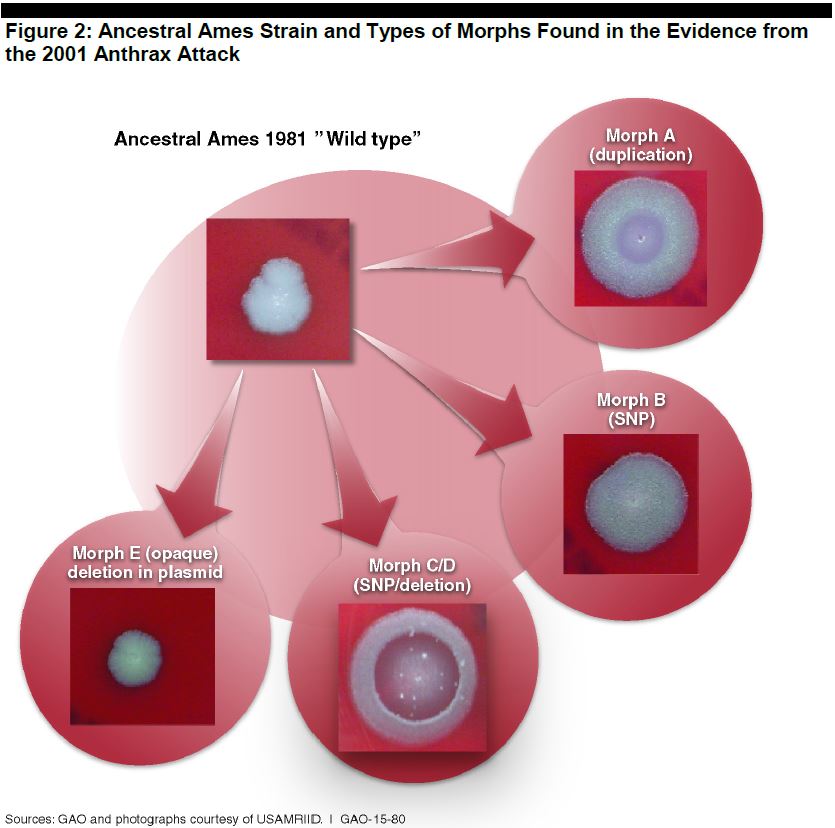GAO Analysis Highlights Lab Samples Excluded in Sloppy FBI Anthrax Investigation
As the last Friday before Christmas, late yesterday afternoon was the most obvious Friday news dump hour of the year, and the government didn’t disappoint. The Government Accountability Office released the results of a twenty-three month long study of the genetic analysis that was used to tie the material found in the anthrax attacks of 2001 to the laboratory of Bruce Ivins, whom the FBI concluded (pdf) was solely responsible for the attacks. The FBI’s conclusion is highly suspect for many reasons. On the science side, it is very unlikely that Ivins could have produced all of the attack material on his own and the detailed chemistry of the attack spores suggests that highly sophisticated materials and techniques unavailable to Ivins likely were used to prepare the attack material. Regarding that second point, note that even William Broad refers indirectly to the chemistry concerns in his New York Times article on the GAO report:
To the regret of independent scientists, the report made no mention of an issue beyond genetics: whether the spores displayed signs of advanced manufacturing. They have pointed to distinctive chemicals found in the dried anthrax spores that they say contradict F.B.I. claims that the germs were unsophisticated.
Evidence of special coatings, they say, suggests that Dr. Ivins had help in obtaining his germ weapons or was innocent.
The GAO study was undertaken, in part, because of questions raised by the National Academies study released in 2011 and with special prompting by Representative Rush Holt, from whose district the letters likely were mailed. The GAO study focused on obtaining a better understanding of the validity of the genetic analysis that was carried out and the statistics underlying the conclusions reached.
For a refresher, a helpful illustration from the GAO report shows the underlying biology of the genetic analysis that was carried out in the Amerithrax investigation. Here we see photos of a typical colony of the Ames strain of Bacilus anthracis on an agar plate and four variant colony types that occurred at low frequency when the attack material was spread out on agar so that colonies arose from single cells of the overall population of bacteria that were present in the attack material:

DNA sequence analysis was employed to identify the changes that led to these variant colony shapes. The FBI then commissioned private laboratories to develop DNA-based tests (relying on polymerase chain reaction, or PCR, methodology) that could be used to screen the large bank of isolates of the Ames strain that the FBI had accumulated through a subpoena submitted to all 20 laboratories known to have isolates of the Ames strain. Developing these assays represented a new frontier in forensic genetics and it did not prove possible to develop tests for all of the mutations identified in the original DNA sequencing. In the end, four tests were developed by the four different contractors.
The Amerithrax report stated that of the 947 samples included in the final analysis, only eight showed all four of the DNA changes the tests were designed to detect. Seven of those samples came from the laboratory where Ivins worked (U.S. Army Medical Research Institute of Infectious Diseases, or USAMRIID) and one came from Batelle Memorial Institute in Columbus, Ohio. The FBI noted that there was a record of material being transferred from USAMRIID to Battelle, accounting for the sample found there.
The GAO analysis finds a number of significant issues with the FBI’s work: Read more →
